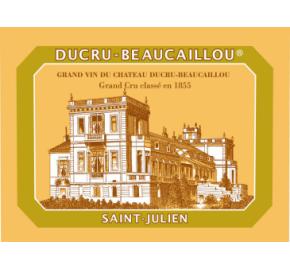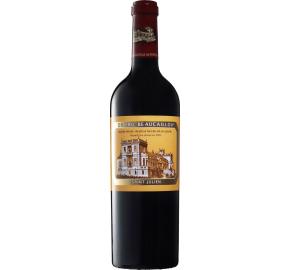Chateau Ducru-Beaucaillou 2005
- Producer Chateau Ducru-Beaucaillou
-
Blend
67% Cabernet Sauvignon
33% Merlot - Country France
- Region Bordeaux
- Appellation Saint-Julien
- UPC 0 15643 42430 4
Log in to view pricing and order online
Don't have an account? Register here
Item# 1670-05
James Suckling
95pt
Vinous Media
94pt
Wine Advocate
97pt
Wine Enthusiast
94-96pt
Wine Spectator
95pt
Vintage
The 2005 vintage was characterised by an exceptional climate, particularly in the summer:
It was:
Very sunny, with almost 2,000 hours of sunshine from May to September, which was 7.5% above average.
Hot but not scorching: 2°C above average, similar to 2000, and 2°C lower than in 2003, and overall with colder nights.
Excessively dry. Rainfall was 45% lower than the yearly average and there was a water shortage of 350 mm in the summer. It was, in fact much drier than in 2000 and 2003. With an exceptional climate come exceptional grapes. These ideal conditions, particularly the drought, which came to a head after 3 successive years of below average rainfall, had several consequences:
Very early, just before ripening, the vines concentrated wholly on maturing the grapes
Vine diseases and parasites were severely curbed
The grapes were 20% smaller than average, which intensified concentration
Forced to develop their root network to find the water needed, the vines also extracted extra nutrients
It was:
Very sunny, with almost 2,000 hours of sunshine from May to September, which was 7.5% above average.
Hot but not scorching: 2°C above average, similar to 2000, and 2°C lower than in 2003, and overall with colder nights.
Excessively dry. Rainfall was 45% lower than the yearly average and there was a water shortage of 350 mm in the summer. It was, in fact much drier than in 2000 and 2003. With an exceptional climate come exceptional grapes. These ideal conditions, particularly the drought, which came to a head after 3 successive years of below average rainfall, had several consequences:
Very early, just before ripening, the vines concentrated wholly on maturing the grapes
Vine diseases and parasites were severely curbed
The grapes were 20% smaller than average, which intensified concentration
Forced to develop their root network to find the water needed, the vines also extracted extra nutrients


